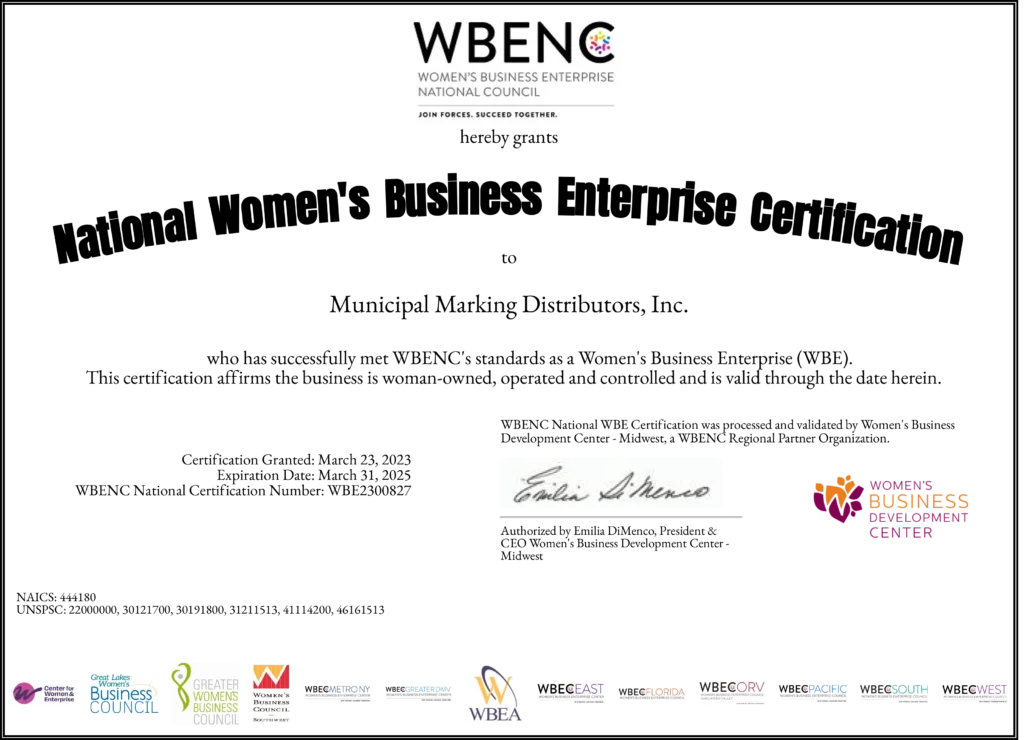Marking paint is an essential tool in construction, surveying, excavation, and utility marking. While it may seem simple to apply, getting it right makes a significant difference in accuracy, efficiency, and durability. Poor application can lead to faded or unclear markings, causing costly delays and miscommunication on the job site. This guide will walk through best practices for applying marking paint correctly to ensure precise, long-lasting results.
Choosing the Right Marking Paint for the Job
Not all marking paints are created equal. Selecting the right type depends on your project’s specific needs, environmental conditions, and required durability. Here’s a quick breakdown of MMD’s marking paint options:
-
- Inverted Paint (Solvent-Based) – A high-quality, long-lasting marking paint ideal for construction, surveying, and utility marking.
- Water Paint – A water-based marking paint suitable for areas where eco-friendly options are preferred.
- Traffic Paint – Specifically formulated for roadways, parking lots, and traffic-related applications.
- Concrete Renew & Asphalt Renew – Durable solutions for resurfacing and revitalizing concrete and asphalt surfaces.
- Backcountry Rescue Safety Paint – Designed for high-visibility and durability in rugged outdoor environments.
Selecting the right marking paint ensures longevity and visibility while preventing unnecessary reapplications that slow down job site operations.
Preparing the Surface for Optimal Paint Adhesion
Proper surface preparation ensures paint adheres correctly and remains visible for as long as needed. Before applying marking paint:
- Clean the surface – Remove dirt, dust, and debris to prevent paint from wearing off too quickly.
- Dry the area – Moisture can cause paint to smear or reduce adhesion.
- Account for terrain – Marking on asphalt, concrete, dirt, or grass requires slight adjustments in technique. For example, on porous surfaces like dirt, applying multiple layers improves visibility.
- Check weather conditions – Avoid applying paint during heavy rain or extreme heat, which can cause premature fading or uneven drying.
Application Techniques for Maximum Visibility and Longevity
Proper application is key to creating clear, consistent marks. Follow these best practices for precision:
- Hold the can at the correct distance – Typically 4-6 inches from the surface for even coverage.
- Use a steady motion – Apply in a continuous, smooth motion to prevent drips or overspray.
- Apply multiple coats if needed – A second pass may be necessary for high-traffic areas or rough surfaces.
- Use marking wands or striping machines – These tools improve accuracy and reduce operator fatigue, especially for large-scale projects.
- Consider layering techniques – Applying a base layer of white paint before a colored marking can enhance brightness and longevity, particularly on dark surfaces.
Enhancing Efficiency on the Job Site
Efficiency matters, especially on large projects where marking is an ongoing task. Improve workflow with these tips:
- Use marking templates and stencils – Ideal for repeatable, high-precision markings.
- Organize marking tasks in advance – Planning your layout reduces time spent making corrections.
- Opt for high-contrast colors – Ensures maximum visibility, even in low-light conditions.
- Consider reflective marking paint – A great option for night work or areas with minimal lighting.
Accurate and efficient marking paint application can save time, reduce errors, and improve job site safety. By choosing the right paint, preparing surfaces properly, using correct application techniques, and avoiding common mistakes, professionals can ensure long-lasting, highly visible markings that streamline operations.
At MMD, we offer high-quality marking paints designed for durability and precision. Contact us today

